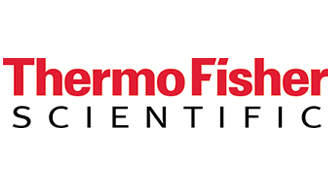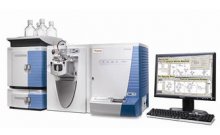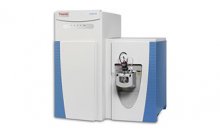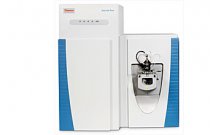用Q Exactive Fucus快速灵敏地分析肉/血浆/牛奶中多系列兽药残留
Quick and Sensitive Analysis of Multiclass Veterinary Drug Residues in Meat, Plasma, and Milk on a Q Exactive Focus LC-MS System
Key Words
Q Exactive Focus, Orbitrap, veterinary drugs, HRAM quantitation, HRAM screening, vDIA, unknown screening, retrospective data analysis
Goal
To describe a new method for veterinary drug analysis, showing how the variable data-independent acquisition (vDIA) workflow achieves high sensitivity and selectivity, providing a complete high-quality data record of the measured sample. Quantitative analysis of the acquired data in combination with non-targeted and unknown screening is shown.
Introduction
The analysis of veterinary drugs in animal products is usually a time-consuming process with respect to both sample preparation and mass spectrometric analysis. The quantitative analysis of multiclass veterinary drug residues from animal products—including meat, milk, and plasma—often requires multiple sample injections in order to achieve optimal conditions for individual classes of compounds. This includes multiple chromatographic methods for different compound classes, as well as separate mass spectrometric methods, each specifically directed to small groups of compounds. The data obtained only contains information on the targeted compounds and is not suitable for any retrospective analysis on additional analytes of interest.
Here, a new method utilizing ultrafast chromatography with the Thermo Scientific™ Q Exactive Focus™ benchtop Orbitrap™ mass spectrometer is described. It consists of a short generic chromatographic method and a new mass spectrometric method called variable data-independent acquisition (vDIA). The advantages of this approach are short overall analysis time, superior selectivity, and high sensitivity. This robust method provides data with suitable options for additional targeted and non-targeted screening. The vDIA approach has been developed and is utilized here for generation of calibration curves and analyses of samples for known and unknown targets. vDIA can use multiple MS/MS isolation windows with widths from
50 Da up to 800 Da. Typically, smaller windows are used for lower mass regions to increase dynamic range and therefore sensitivity, while larger windows cover higher mass regions to improve the duty cycle. In a typical acquisition setup, shown here, five MS/MS isolation windows were set to cover the entire mass range of the preceding full scan while maintaining speed of MS/MS analysis for the fast chromatography.
Forty-four multi-class veterinary drug residues listed in Table 1, were analyzed in extracts of muscle, kidney, milk, and plasma using a single standardized chromatographic and mass spectrometric method. For absolute quantification, standard samples with known concentrations of all 44 drug residues covering eight calibration points (from 100 pg/mL (ppt) to 500 ng/mL (ppb)) were prepared. For evaluation of the method, spiked matrix samples (muscle and kidney for antibiotics, milk for avermectins and plasma for nitroimidazoles) were analyzed by high-resolution, accurate-mass (HRAM) LC-MS/MS.
Conclusion
The Q Exactive Focus MS in combination with an UltiMate 3000 HPLC was used to create a variable data-independent acquisition method for the detection and quantification of 44 multiclass veterinary drug residues. This novel method proved to have the required LOD sensitivity, and ability to confirm identity using retention time, accurate m/z, isotopic ratio, and fragment ions to exceed the EU regulatory requirements (EC/657/2002). The vDIA approach extends confirmation options for non-targeted and unknown screening approaches, while maintaining a high level of sensitivity and selectivity. All data processing was accomplished with the easy-to-use TraceFinder software both for identification and all stages of identity confirmation. vDIA accomplishes the goal of being an accurate and sensitive analysis for the detection of non-targeted compounds (i.e. those from the 44 compound panel) and also for the screening of unknown compounds post-analysis.




